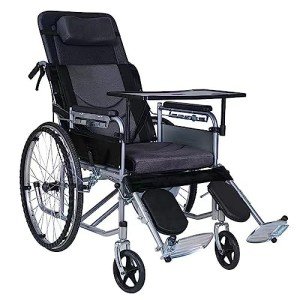Bariatric Wheelchair Seat Width
Seat Width
Having the proper seat width is necessary to wheelchair users who spend longer durations in their chairs. Too narrow a seat will trigger pressure on the hips and thighs which could lead to sores or pressure points. Having too broad a seat can likewise make it difficult for the user to reach the hand rims to propel themselves or maneuver in small areas.
To measure the right seat width an individual would sit on a chair generally and have their measurement taken across their lap at the largest point which is usually their hips. A wheelchair determining tape can be utilized to determine this, but a backyard stick is preferred as it prevents individuals from covering the tape around their hips which would give an inaccurate outcome.
The basic wheelchair seat width is 16" (narrow grownup), 18" (basic grownup), and 20" (broad grownup). For bariatric patients, a 24" seat is offered. This heavy-duty additional broad bariatric wheelchair from Medline features swing-away footrests, a carbon steel frame with rust- and chip-resistant chrome plating, and easy-to-clean vinyl upholstery. It has a weight capacity of 500 pounds.
Seat Depth
Typically, the seat depth of a bariatric wheelchair was added 2" to the measurement taken at the user's best point (typically their hips). This was suggested to accommodate additional layers of clothes that might be used during winter. However, this practice is ending up being less common as wheelchair users have the ability to spend more time inside your home and are not using long coats. This makes the seat depth of a chair less essential when choosing a bariatric wheelchair. However, it is still crucial to pick an alternative that provides appropriate assistance for bigger users.
The Medline folding extra wide bariatric manual wheelchair includes a comfortable 24" seat width and a sturdy slide tube silver vein frame. It likewise has an adjustable axle and tool-free elevating legrests.
Seat Height
When it comes to figuring out the appropriate wheelchair seat width you need to always determine from the user's widest point which is typically their hips. website will also need to think about whether the user is going to be using a winter coat as this may add 2" to the width required.
When a wheelchair is in usage it need to only be operated on level surfaces with the wheel locks totally engaged. This is to avoid the chair from having the ability to move slopes that are 10 degrees or higher. It is likewise important to keep in mind that any activity that might shift the center of mass in the chair need to be made with care. This includes reaching for items that require the person to lean out of their seat or attempting to stand up from it.
Whenever you have the chair in usage it is suggested that you frequently inspect it for damage and lubricate any areas that are considered essential. For example, the casters must be lubricated by getting rid of the caster fork and using a multi-purpose grease to use to the caster stem bearings. Also, the foot plates can be adjusted by loosening up the bolt and after that moving them to the desired position. This allows the feet to sit conveniently on the footplate and prevents any pressure points from forming. This can be extremely unpleasant for the user and if left ignored, can cause push sores.
Weight Capacity
Bariatric wheelchairs are created to support more weight than standard wheelchairs. This makes them tougher and much better geared up to deal with falls. They are also typically larger and larger, making them less maneuverable in tight spaces than standard wheelchairs. They require lorries with special ramps and lifts to pack them, in addition to motorists who understand how to best transport them from one area to the next.

When choosing a wheelchair, consider its weight capacity as it will be the primary determining element in whether it will accommodate your traveler's requirements. The weight capacity of the chair is frequently noted as a static load, implying that it shows the amount of weight the chair can comfortably hold while stalling. However, some manufacturers also note an active load that is based on a drop test and can mimic the impact of somebody sitting down in the chair. This may be a more trustworthy measurement of the weight limit, depending on your needs.
If you plan to carry out activities that move your center of gravity in the seat (such as grabbing objects), make certain to have front casters pointed in a forward direction and wheel locks engaged so the chair will not tip over. Likewise, check that casters are lubricated regularly to prevent excessive wear and abrasions. The lubrication procedure involves getting rid of the fork, separating the caster from the wheel, and greasing the caster stem bearings with premium multi-purpose grease.
